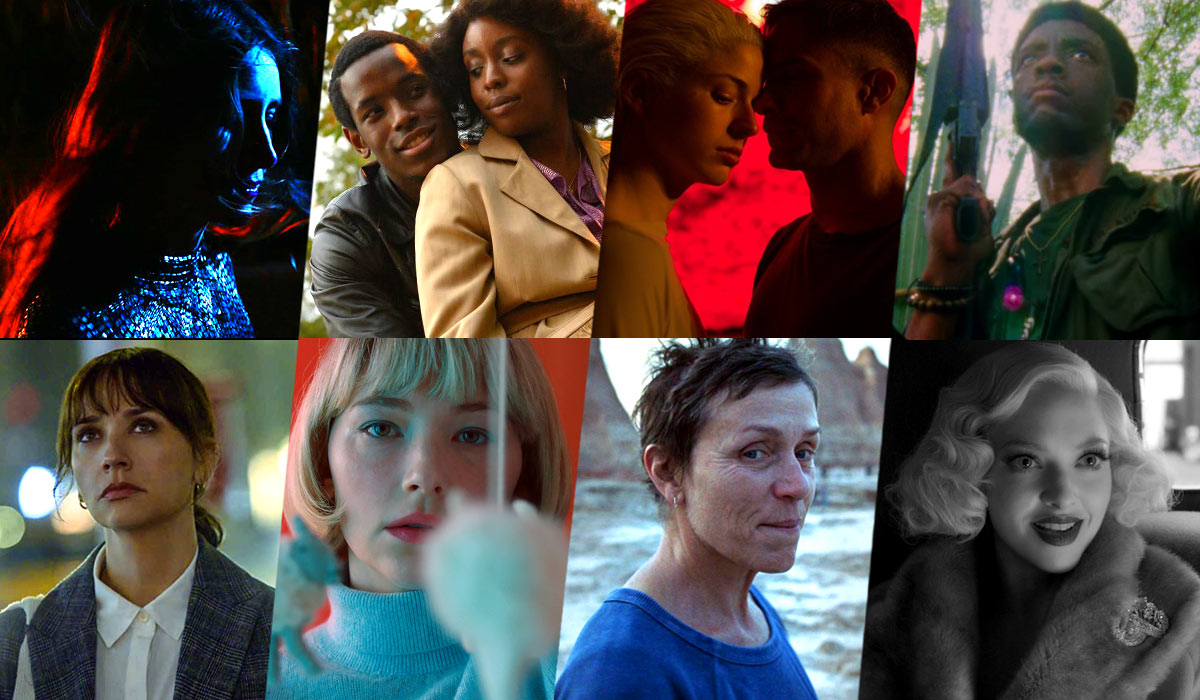“Sound of Metal”
It’s easy to think of American Sign Language as a form of performance art, and yes, performance is a not-insignificant aspect of learning and speaking it. But praising the art of ASL misses its function as a tool for communication, and in the case of Darius Marder’s “Sound of Metal,” it also neglects the adjustments a DP has to make to properly shoot ASL dialogue: The hands are essential, of course, but so are the torso and the face, and frankly everything else, too, because ASL isn’t the language of the hands but the language of the human body. Daniël Bouqet has a strong sense of where characters in conversation should be in relation to one another. In fact, he’s so good at connecting characters on screen that even if you don’t even know the alphabet in sign, you’ll still have an idea of what everyone’s talking about. It’s a boon that Marder casts deaf actors like Paul Raci and Lauren Ridloff to bring honesty to his movie, but it’s a relief that he has a DP on board who respects the adjustments needed to treat sign language as a visual cue. – AC
“The Invisible Man”
If Leigh Whannell’s modernized take on H.G. Wells’ “The Invisible Man” comes down to two words, those words are probably “Elisabeth Moss.” But should they come down to four, the others would be “dead space,” and hell, let’s go to six and include “Stefan Duscio,” too. This film hinges not on what’s seen, of course, but what’s unseen, and Whannell wisely directs Duscio to focus on empty zones in the frame as warning flags, whether false or real, of danger undetectable to the eye. Even in a movie shot with standard filmmaking language, the potential would exist for this update’s Griffin surrogate to be in the picture without being there; in this version, blocking keeps at the front of our minds a panicked intuition that he specifically be there or there, in the unfilled portion of the image Moss doesn’t inhabit. It’s nerve-wracking paranoiac work that leaves the senses frayed. – AC
“Ema”
Pitched somewhere in between chaotic domestic drama about a traumatic failed adoption and erotic reggaeton musical about liberation, sexual and otherwise, from conservative dogmas and conventional cultural thinking, Pablo Larraín’s “Ema” and its bleached-bond protagonist, seemingly burning everything she touches, is masterfully complex and full of striking imagery. It’s a film of intense passion and intense people, who dance like their lives depend on movement, like air, and perhaps to quell the pain in the hearts. Naturally, “Ema” is deeply vibrant; the sensual, sweaty, erotic mien of the movie captured in dazzling color temperatures, balmy neon, and glowing scenes of corpulent, twisting bodies, dancing to live. Shot by Larraín regular Sergio Armstrong (“Neruda,” “The Club“), “Ema” is hypnotic, lubricious, and filled with unconventional first-person shots that are almost breaking the fourth wall, but don’t, adding to the overall friction throughout the film. In “Ema,” its enigmatic protagonist tries to blaze her mark on the culture through dance and through a metaphoric homemade flamethrower she wields for kicks. Armstrong makes sure every drip of gasoline blazes incandescently over the sky in arresting fashion. – Rodrigo Perez
“First Cow”
Since it’s December and we’ve all gotten our “what about second or third cow” jokes out of our systems, let’s all revisit Kelly Reichardt’s latest and admire her remarkable confluence of calm and calamity: Christopher Blauvelt, the fella in charge of shooting the best contemporary American filmmaker’s movies since “Meek’s Cutoff,” looks for, and finds, a balancing point between beauty and foreboding. Like everything Reichardt does, “First Cow” is tranquil, even soothing, without belying the pricklier contentions lingering around the center. Here lies the tale of how American capitalism married American exceptionalism, the unholy union that’s led the country in part to the state it’s in today where industry rules over all with one fist bloodied and the other wrapped around a gun. But the film never goes out of its way to ram that argument down our throats. Instead, Blauvelt follows Reichardt’s harmonious lead and makes the serenity of the American West and the great outdoors his focal point. – AB
“Bacurau”
Kleber Mendonça Filho and Juliano Dornelles made a movie with the heart of John Carpenter, the scope of the great American Western, and the defiance of people who know the history of oppression in their home country. Their setting is Brazil’s sertão; their intention is to remind the audience of Brazil’s long, colorful history with colonialism, and to entertain us with a handful of well-placed bullets (plus a devilish Udo Kier performance). Pedro Sotero informs “Bacurau”s aesthetic with grandeur: Taking in the backdrop is part of the film’s pleasure. Arid as the land may look, it’s sweeping and wide open, too. Save for the odd pile of overturned coffins littered across roads and streaks of blood that stain the dirt in gunfights, Sotero’s photography is quite lovely. But rather cleverly his eye for the environment drives home mounting loneliness. Filho and Dornelles’ characters are isolated. They’re on their own. They only have each other, and Sotero’s camera never lets us forget it. – AC





